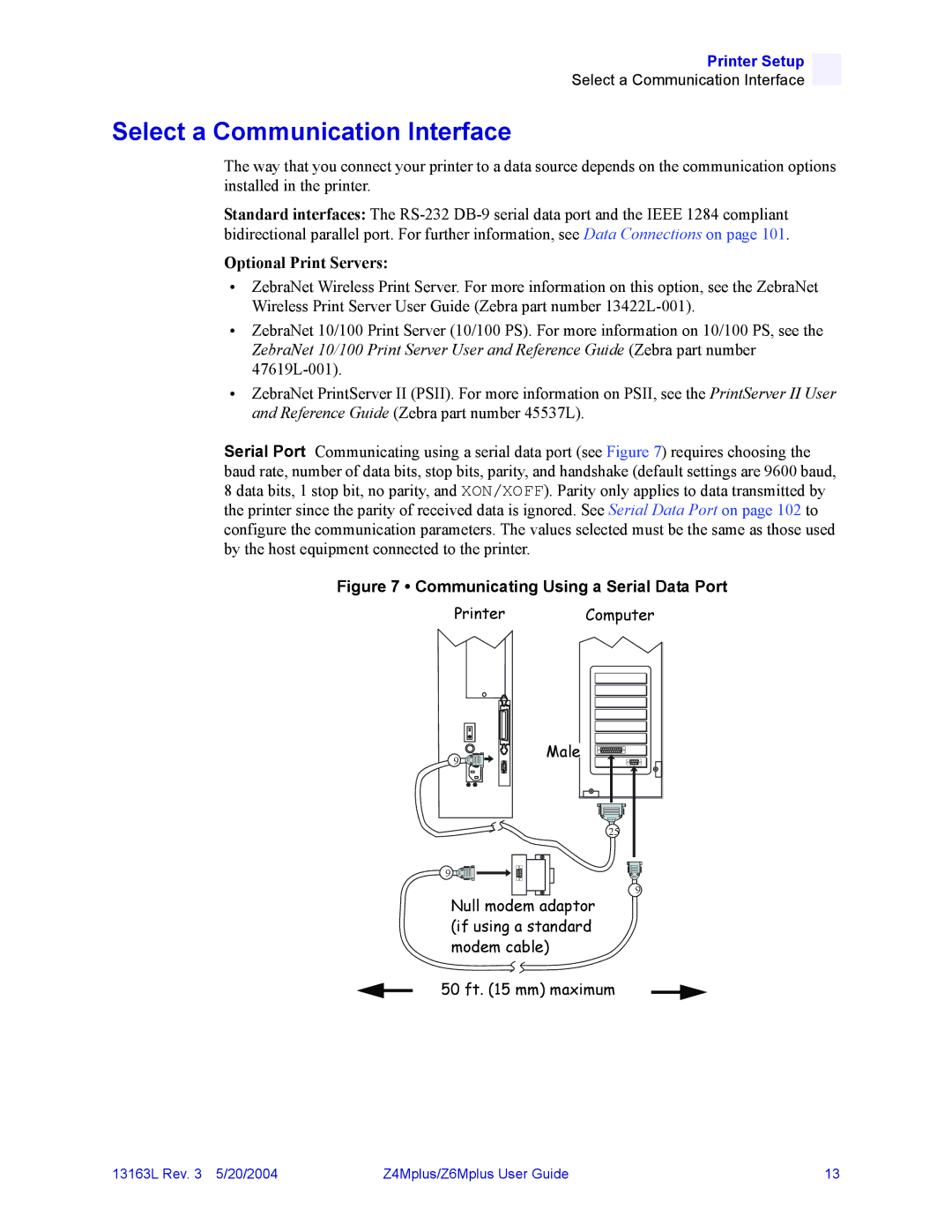
Printer Setup
Select a Communication Interface
Select a Communication Interface
The way that you connect your printer to a data source depends on the communication options installed in the printer.
Standard interfaces: The
Optional Print Servers:
•ZebraNet Wireless Print Server. For more information on this option, see the ZebraNet Wireless Print Server User Guide (Zebra part number
•ZebraNet 10/100 Print Server (10/100 PS). For more information on 10/100 PS, see the ZebraNet 10/100 Print Server User and Reference Guide (Zebra part number
•ZebraNet PrintServer II (PSII). For more information on PSII, see the PrintServer II User and Reference Guide (Zebra part number 45537L).
Serial Port Communicating using a serial data port (see Figure 7) requires choosing the baud rate, number of data bits, stop bits, parity, and handshake (default settings are 9600 baud, 8 data bits, 1 stop bit, no parity, and XON/XOFF). Parity only applies to data transmitted by the printer since the parity of received data is ignored. See Serial Data Port on page 102 to configure the communication parameters. The values selected must be the same as those used by the host equipment connected to the printer.
Figure 7 • Communicating Using a Serial Data Port
Printer | Computer |
9 | Male |
| |
| 25 |
9 |
|
| 9 |
Null modem adaptor (if using a standard modem cable)
50 ft. (15 mm) maximum
13163L Rev. 3 5/20/2004 | Z4Mplus/Z6Mplus User Guide | 13 |
